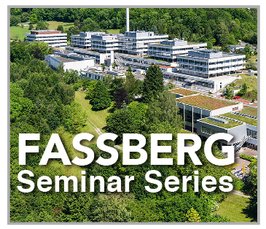Fassberg Seminar - Special Date!: Transport and self-organized assembly in cilia
Fassberg Seminar - Special Date!
- Datum: 15.12.2017
- Uhrzeit: 12:30 - 13:30
- Vortragende(r): Dr. Gaia Pigino
- Max Planck Institute of Molecular Cell Biology and Genetics, Dresden
- Ort: Max-Planck-Institut für biophysikalische Chemie (MPIBPC)
- Raum: Ludwig Prandtl Hall
- Gastgeber: Stefan W. Hell
- Kontakt: helena.miletic@mpibpc.mpg.de

A standing question in biology is how complex cellular machines self-organize starting from nanometer-scale components. Addressing this question requires detailed observations at high spatial and temporal resolutions. We use 3D cryo-electron microscopy to achieve sufficient spatial resolution, and we develop correlative light and electron microscopy methods to capture temporal dynamics. With these tools at hand we aim at understanding the dynamic processes needed for the assembly of the cilium, a hair-like organelle that extends from the surface of most eukaryotic cells and serves important motility, sensing, and signaling functions. The microtubule-based core of the cilium, the axoneme, is comprised of more than 600 different proteins that rapidly self-organize in a complex elegant three-dimensional architecture. How the cell builds such a complex structure is largely unknown. Most of these proteins decorate the axonemal microtubule-doublets, which comprise of a complete A-tubule and an incomplete B-tubule. Along the microtubule doublet happens the interflagellar transport (IFT), a key process required for axonemal assembly. Anterograde and retrograde IFT-trains zip up and down the axoneme to transport ciliary building blocks and turnover material between the cell body and the assembly site at the ciliary tip. The trains are moved by oppositely directed motors, which are specific for the IFT system. We have recently developed a time-resolved correlative fluorescence and three-dimensional electron microscopy approach to investigate the dynamics of intraflagellar transport (IFT) at high resolution. We showed that anterograde IFT trains move along B-tubules, and retrograde trains move along A-tubules of microtubule doublets. Thus, the microtubule doublet geometry provides direction-specific rails to coordinate bidirectional transport of ciliary components. We are now investigating how IFT motors can discriminate between the two microtubules. More recently, we have used cryo-electron tomography and subtomogram averaging to show in situ the previously unknown 3D molecular structure of IFT trains, which additionally provides a mechanistic understanding of how the tug-of-war between kinesin-2 (anterograde motor) and dynein-1b (retrograde motor) is avoided in cilia.